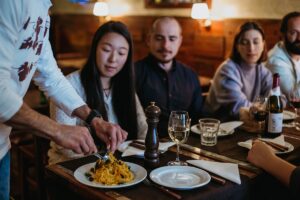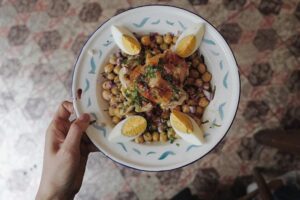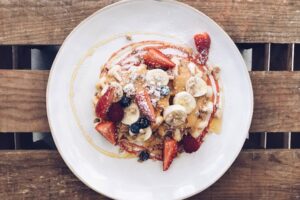Last Updated on December 5, 2025 by Emma Fajcz | Published: December 19, 2018
It’s hard to imagine there was ever a Lisbon without trams. Today, these yellow streetcars are so iconic they became one of the city’s main attractions.
Lisbon is full of narrow streets, and to reach them you’ll often need the tram, or as we Portuguese call it, the elétrico. Before they became the background of tourist photos and postcards, trams were just another form of public transport. Even now, with the metro and the bus, many locals still prefer to hop on a tram.
You might have heard of Lisbon tram 28, which runs through the historic center. But there are many other Lisbon trams, that take you further afield, to the little-known neighborhoods of Ajuda and Campolide. So when did the first tram emerge in Lisbon, and what’s changed over the years? Keep reading, and we’ll tell you all about it!

Photo Credit: cityodes, Text Overlay: Devour Lisbon Food Tours
History of Lisbon Trams
Lisbon wasn’t always known for its tiled façades and gorgeous viewpoints. By the end of the 19th century, Lisbon was among the smallest and least civilized cities in Europe.
You would never have guessed that this was the capital of a big empire with colonies in Africa and Asia.
Even though it was far from its prosperous period, the city was slowly transforming itself. For the first time, Lisbon had piped water, phones, and electricity.
In 1873, a company called Carris established the first horsecar line in Lisbon. The idea came from America, so they were known as Carros Americanos.

Meanwhile, other European and American cities were already using the electric trams, and soon Lisbon followed suit.
But not everyone welcomed the change. Many thought it was going to be a dangerous transport, exposing the population to a constant death threat.
It was at 6 a.m., on the 31st of August 1901, that the first electric tram departed from Cais Sodré towards Ribamar, now known as Algés.
Locals were so curious about this new transport, they forgot all about their fears.
As the years went by, the trams and their creaking sounds became a familiar city feature.
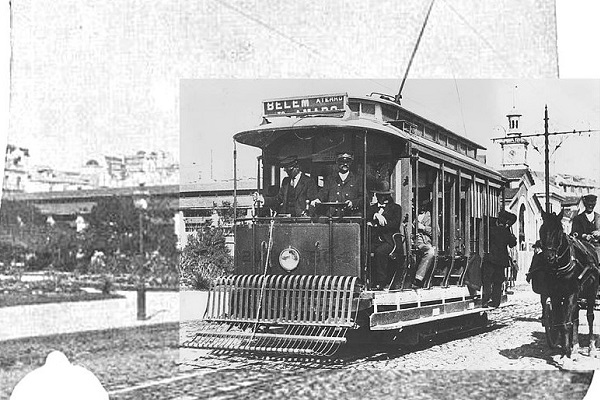
People took them to go to work or to school during the week. On Sundays, they would venture to the bullfighting in Campo Pequeno, the zoo in Sete Rios, or the beaches of Dafundo.
Inside, the cobrador waited for the passengers. He had two roles: to validate the ticket and to get rid of the penduras, people who climbed along the sides of the tram for a free ride.
As more people moved to the city, the traffic got worse and worse. The trams were always packed, and wherever you waited, there were long queues to get in.
Buses replaced trams to ease the traffic, but that still didn’t fix the problem.
By the time the metro arrived in 1959, the tram routes had diminished. Many never returned, but you can still follow their trails around the city.
Lisbon Trams Now
Lisbon trams are no longer a symbol of modernity, but a memory of the past.
The tram 15, which did that first trip from Cais do Sodré back in 1901, got a makeover. All the others look pretty much the same, inside and out.

The cobrador is gone, and there’s a red button replacing the wire the passengers once pushed to stop the tram. Despite some of the changes, the tram still preserves most of its original charm.
Sit by a tram stop today, and you’ll hear the old ladies complain how they can never get on the 28 because it’s always full of tourists. They’ll shout to you— “Parecem sardinhas em lata” (They look like sardines in a can). If you’re a local, you’ll nod in agreement.
Like the 28, the tram 15 is also a favorite among tourists. You might not always catch the vintage tram, but it does the job in getting you to Belém. That’s where you’ll find the Pastéis de Belém, the most delicious custard tarts in Lisbon.
In the height of summer, it’s nearly impossible to board these two trams. Sometimes you can wait up to an hour, and even if you get in, you won’t be able to take any pictures because it will be too crowded.
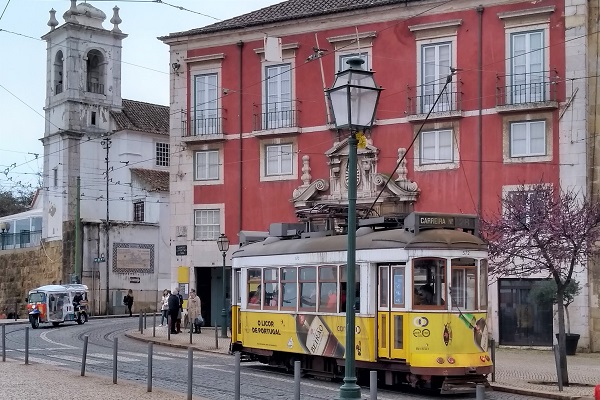
Unfortunately, with tourists, also came the pickpockets. If you’re on a tram today, you have to keep your valuables close, especially when you’re getting in and out.
We’ll be honest. If you’re in a rush to get somewhere, you’ll be better off with the metro or a bus. Trams tend to take a lot longer, and they often stop because someone parked their car right in the middle of the tracks.
But if you’re looking for a slow-paced tour of Lisbon, then, by all means, take the tram.
The tram 28 got all the fame, but there are many more routes worth taking, and we encourage you to do so.
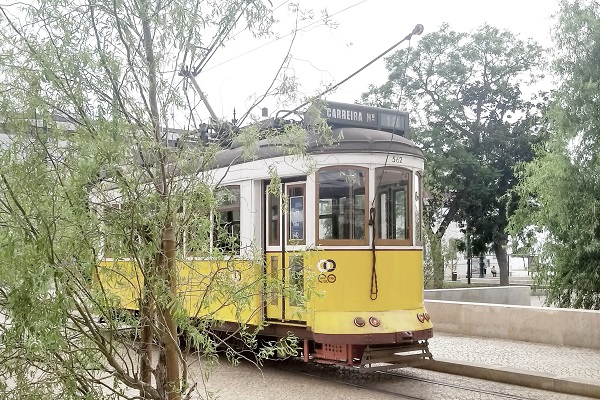
There’s also a red tram just for tourists. The ride is a bit more expensive, but if you want a comfortable seat for the whole journey, it’s probably the best option. If you visit around Christmas, you might spot the Christmas tram with Santa on the driver’ seat.
Some tram routes disappeared with time, but it looks like they’re making a comeback. In 2018, 23 years after it was suspended, the tram 24 returned, connecting Cais do Sodré to Campolide once again.
Maybe more trams will be back in the future, but for now, you can enjoy the city’s six remaining routes.
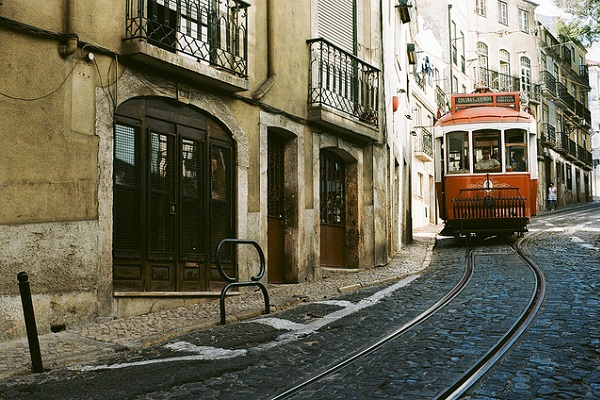
Lisbon Tram Routes:
- Tram 28 – This is the most popular tram route in Lisbon. It goes from the Martim Moniz square all the way to Campo de Ourique, passing through the historic neighborhood of Alfama and Graça.
- Tram 12 – This one does a similar route to the 28, but stops in Alfama, near the Santa Luzia viewpoint.
- Tram 15 – There are still a few vintage trams on this route, but you usually take the modern one. The tram runs from Praça da Figueira to Algés, which is a bit past Belém.
- Tram 18 – This is probably the least busy tram route. It goes from Cais do Sodré towards the quiet neighborhood of Ajuda.
- Tram 24 – The most recent addition to the city, this tram takes you from the city center to Campolide, passing through Amoreiras, and the trendy neighborhood of Príncipe Real.
- Tram 25 – This tram does a similar stretch to the 28. It skips Alfama but still passes through the Basilica of Estrela and finishes at Campo de Ourique.
Insider’s tips: Save money and buy tickets in advance in a metro station or a newspaper kiosk. A transport card costs €0.50, and you can top it off with cash as you go. Also, to avoid the crowds on the 28 we suggest traveling at off-peak times, before 9 a.m. and after 7 p.m.
